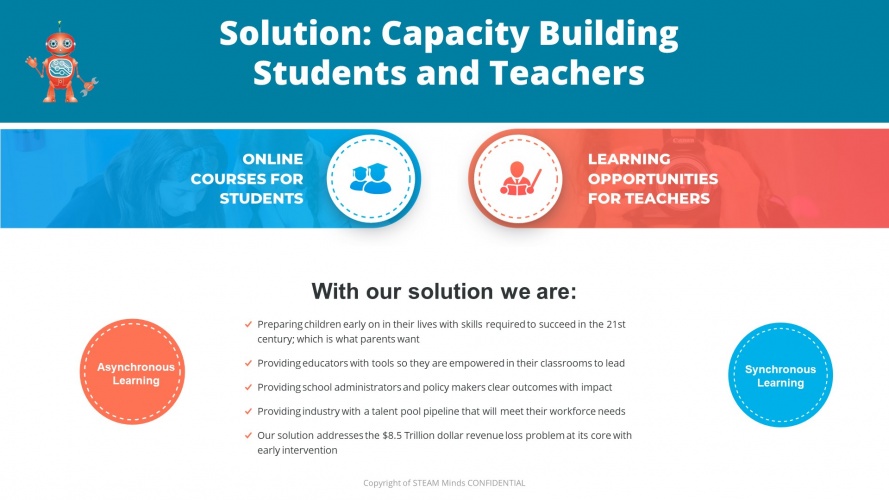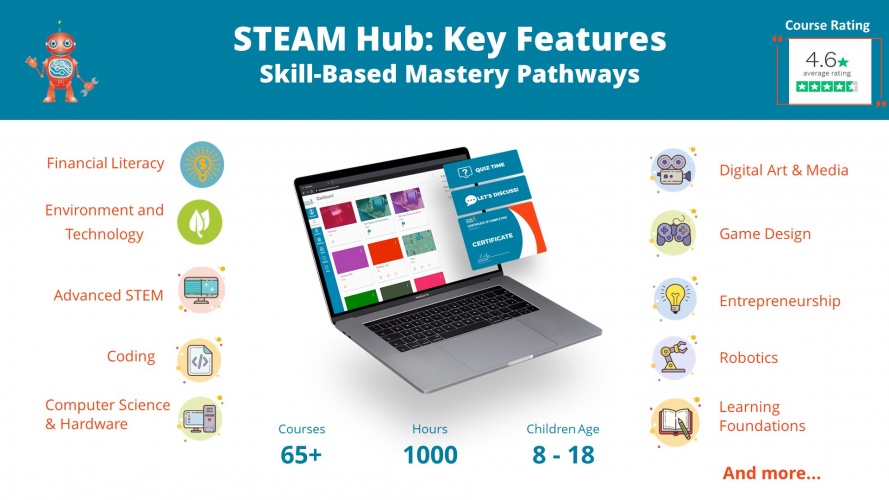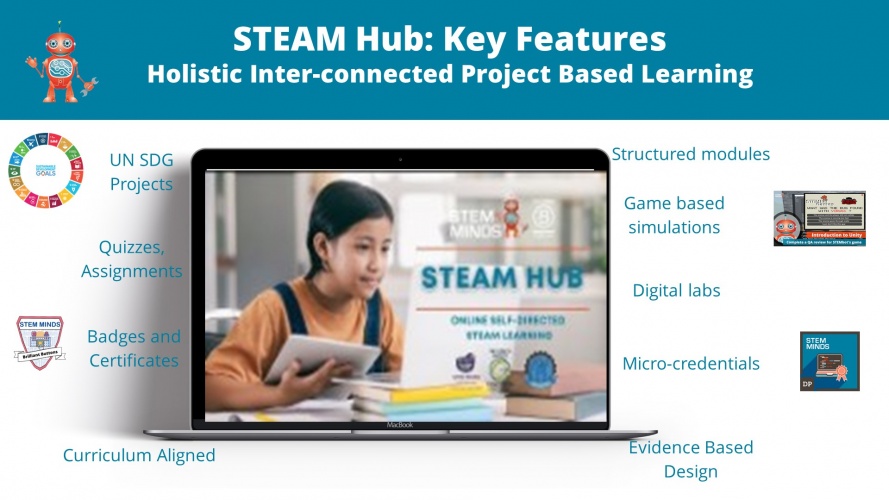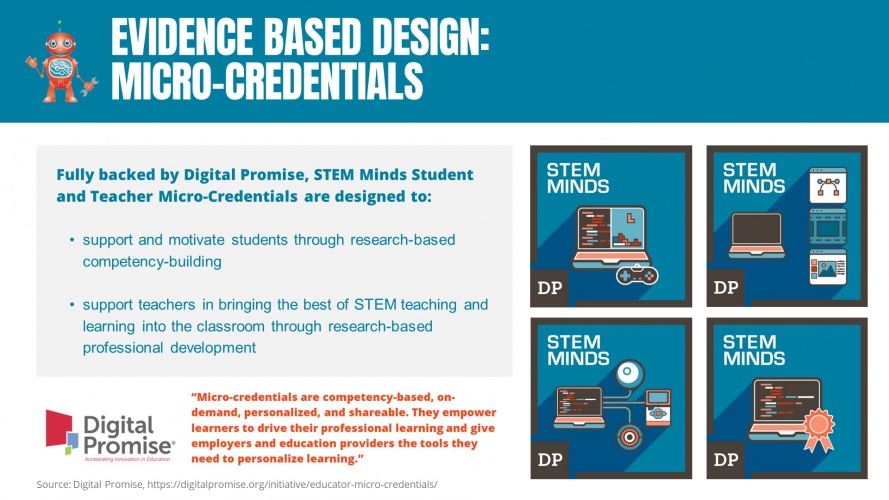To use drawing, painting and sculpture to develop and share their ideas, experiences and imagination.
3. reflect on and identify their strengths as listeners and speakers, areas for improvement, and the strategies they found most helpful in oral communication situations. (Skill)
Produce creative work, exploring their ideas and recording their experiences.
1.3 identify a variety of listening comprehension strategies and use them appropriately before, during, and after listening in order to understand and clarify the meaning of increasingly complex or challenging oral texts (e.g., use background knowledge about the structure of oral texts such as debates, interviews, speeches, monologues, lectures, and plays to make predictions and identify important ideas while listening; ask questions for clarification or further information; visualize scenes suggested by evocative or descriptive language in a text; use notetaking strategies to keep track of or summarize important points made by a speaker). (Skill)
Apply computing and use electronics to embed intelligence in products that respond to inputs [for example, sensors], and control outputs [for example, actuators], using programmable components [for example, microcontrollers].
1. listen in order to understand and respond appropriately in a variety of situations for a variety of purposes. (Skill)
3.2 identify, in conversation with the teacher and peers, how their skills as viewers, representers, readers, and writers help them improve their oral communication skills. (Skill)
2.5 identify a range of vocal effects, including tone, pace, pitch, volume, and a variety of sound effects, and use them appropriately and with sensitivity towards cultural differences to help communicate their meaning (e.g., create different-sounding “voices”for the characters in a dramatization of a story). (Skill)
Investigate new and emerging technologies.
Apply their understanding of computing to program, monitor and control their products.
1.1 identify a range of purposes for listening in a variety of situations, formal and informal, and set goals related to specific listening tasks (e.g., to understand learning strategies modelled by the teacher during think-alouds; to develop a response to a commentary on an issue; to share information and ideas about a topic with peers during conversations, discussions, and meetings; to become familiar with and appreciate the sounds of different types of poetry). (Skill)
1.1 identify purposes for listening in a variety of situations, formal and informal, and set personal goals related to listening tasks (e.g., to explore ideas in a book club discussion; to understand and empathize with a favourite character in a play; to express an opinion or offer advice to a partner during a peer conference). (Skill)
Build and apply a repertoire of knowledge, understanding and skills in order to design and make high-quality prototypes and products for a wide range of users.
2. use speaking skills and strategies appropriately to communicate with different audiences for a variety of purposes. (Skill)
Understand how changes in technology affect safety, including new ways to protect their online privacy and identity.
2. identify some media forms and explain how the conventions and techniques associated with them are used to create meaning. (Skill)
3.2 identify an appropriate form to suit the purpose and audience for a media text they plan to create (e.g., a multimedia presentation about their class or grade, to be presented to parents during graduation ceremonies) and explain why it is an appropriate choice. (Skill)
4. reflect on and identify their strengths as media interpreters and creators, areas for improvement, and the strategies they found most helpful in understanding and creating media texts. (Skill)
3. create a variety of media texts for different purposes and audiences, using appropriate forms, conventions, and techniques. (Skill)
Be responsible, competent, confident and creative users of information and communication technology.
1.1 identify a range of purposes for listening in a variety of situations, formal and informal, and set goals appropriate to specific listening tasks (e.g., to evaluate the effectiveness of the arguments on both sides of a class debate on an environmental, social, or global issue; to respond to feedback in peer conferences and student/teacher conferences). (Skill)
Select, use and combine a variety of software (including internet services) on a range of digital devices to design and create a range of programs, systems and content that accomplish given goals, including collecting, analysing, evaluating and presenting data and information.
Understand computer networks including the internet; how they can provide multiple services, such as the world wide web; and the opportunities they offer for communication and collaboration.
Recognise common uses of information technology beyond school.
2.6 identify some non-verbal cues, including facial expression, gestures, and eye contact, and use them in oral communications, appropriately and with sensitivity towards cultural differences, to help convey their meaning. (Skill)
Use logical reasoning to predict the behaviour of simple programs.
to analyse and evaluate their own work, and that of others, in order to strengthen the visual impact or applications of their work.
to use a range of techniques and media, including painting.
Develop programs for multiple computing platforms.
Create programs that use variables to store and modify data.
Construct solutions to problems using student-created components, such as procedures, modules and/or objects.
Use and adapt classic algorithms to solve computational problems.
Explain security issues that might lead to compromised computer programs.
Generate, develop, model and communicate their ideas through discussion, annotated sketches, cross-sectional and exploded diagrams, prototypes, pattern pieces and computer-aided design.
Select from and use a wider range of tools and equipment to perform practical tasks [for example, cutting, shaping, joining and finishing], accurately.
Explore and evaluate a range of existing products.
Evaluate their ideas and products against design criteria.
Select from and use a range of tools and equipment to perform practical tasks [for example, cutting, shaping, joining and finishing].
Generate, develop, model and communicate their ideas through talking, drawing, templates, mock-ups and, where appropriate, information and communication technology.
Design purposeful, functional, appealing products for themselves and other users based on design criteria.
Critique, evaluate and test their ideas and products and the work of others.
Develop the creative, technical and practical expertise needed to perform everyday tasks confidently and to participate successfully in an increasingly technological world.
Understand developments in design and technology, its impact on individuals, society and the environment, and the responsibilities of designers, engineers and technologists.
Develop and communicate design ideas using annotated sketches, detailed plans, 3-D and mathematical modelling, oral and digital presentations and computer-based tools.
Understand how data of various types can be represented and manipulated digitally, in the form of binary digits.
Understand how numbers can be represented in binary, and be able to carry out simple operations on binary numbers.
Understand several key algorithms that reflect computational thinking.
Understand and apply the fundamental principles and concepts of computer science, including abstraction, logic, algorithms and data representation.
Design, use and evaluate computational abstractions that model the state and behaviour of real-world problems and physical systems.
Design and develop modular programs that use procedures or functions.
Achieve challenging goals, including collecting and analysing data and meeting the needs of known users.
Learn to analyse problems in computational terms
Use logical reasoning to explain how some simple algorithms work and to detect and correct errors in algorithms and programs.
Use sequence, selection, and repetition in programs; work with variables and various forms of input and output.
Use technology safely and respectfully, keeping personal information private; identify where to go for help and support when they have concerns about content or contact on the internet or other online technologies.
Use technology purposefully to create, organise, store, manipulate and retrieve digital content.
Create and debug simple programs.
Understand what algorithms are; how they are implemented as programs on digital devices; and that programs execute by following precise and unambiguous instructions.
Are responsible, competent, confident and creative users of information and communication technology.
Can evaluate and apply information technology, including new or unfamiliar technologies, analytically to solve problems.
Can analyse problems in computational terms, and have repeated practical experience of writing computer programs in order to solve such problems.
Can understand and apply the fundamental principles and concepts of computer science, including abstraction, logic, algorithms and data representation.
To improve their mastery of art and design techniques, including drawing, painting and sculpture with a range of materials [for example, pencil, charcoal, paint, clay].
To create sketch books to record their observations and use them to review and revisit ideas.
Become proficient in drawing, painting, sculpture and other art, craft and design techniques.
Model how information is broken down into smaller pieces, transmitted as packets through multiple devices over networks and the Internet, and reassembled at the destination.
Seek diverse perspectives for the purpose of improving computational artifacts.
Brainstorm ways to improve the accessibility and usability of technology products for the diverse needs and wants of users.
Keep login information private, and log off of devices appropriately.
Work respectfully and responsibly with others online.
Organize and present collected data visually to highlight relationships and support a claim.
Create interactive data visualizations using software tools to help others better understand real-world phenomena.
Create computational models that represent the relationships among different elements of data collected from a phenomenon or process.
Identify and describe patterns in data visualizations, such as charts or graphs, to make predictions.
Collect and present the same data in various visual formats.
Store, copy, search, retrieve, modify, and delete information using a computing device and define the information stored as data.
Design projects that combine hardware and software components to collect and exchange data.
Determine potential solutions to solve simple hardware and software problems using common troubleshooting strategies.
Use appropriate terminology in identifying and describing the function of common physical components of computing systems (hardware).
Select and operate appropriate software to perform a variety of tasks, and recognize that users have different needs and preferences for the technology they use.
Describe basic hardware and software problems using accurate terminology.
Categorize the roles of operating system software.
Decompose (break down) the steps needed to solve a problem into a precise sequence of instructions.
Develop plans that describe a program’s sequence of events, goals, and expected outcomes.
Give attribution when using the ideas and creations of others while developing programs.
Debug (identify and fix) errors in an algorithm or program that includes sequences and simple loops.
Using correct terminology, describe steps taken and choices made during the iterative process of program development.
Model daily processes by creating and following algorithms (sets of step-by-step instructions) to complete tasks.
Model the way programs store and manipulate data by using numbers or other symbols to represent information.
Develop programs with sequences and simple loops, to express ideas or address a problem.
Seek and incorporate feedback from team members and users to refine a solution that meets user needs.
Incorporate existing code, media, and libraries into original programs, and give attribution.
Document design decisions using text, graphics, presentations, and/or demonstrations in the development of complex programs.
Decompose problems into smaller components through systematic analysis, using constructs such as procedures, modules, and/or objects.
Create prototypes that use algorithms to solve computational problems by leveraging prior student knowledge and personal interests.
Test and debug (identify and fix errors) a program or algorithm to ensure it runs as intended.
Modify, remix, or incorporate portions of an existing program into one's own work, to develop something new or add more advanced features.
Decompose (break down) problems into smaller, manageable subproblems to facilitate the program development process.
Create programs that include sequences, events, loops, and conditionals.
2.1 identify a range of purposes for speaking and explain how the purpose and intended audience might influence the choice of speaking strategies (e.g., to present conclusions about a research project through dramatization, a role play, or a monologue; to interest classmates in a social issue through a debate; to solve problems or investigate issues and ideas through a group brainstorming session). (Skill)
3.2 identify an appropriate form to suit the purpose and audience for a media text they plan to create. (Skill)
4. reflect on and identify their strengths as media interpreters and creators, areas for improvement, and the strategies they found most helpful in understanding and creating media texts.. (Skill)
Discuss computing technologies that have changed the world, and express how those technologies influence, and are influenced by, cultural practices.
Predict how computational innovations that have revolutionized aspects of our culture might evolve.
Evaluate the impact of equity, access, and influence on the distribution of computing resources in a global society.
Evaluate computational artifacts to maximize their beneficial effects and minimize harmful effects on society.
Translate between different bit representations of real-world phenomena, such as characters, numbers, and images.
Refine computational models based on the data they have generated.
Select data collection tools and techniques to generate data sets that support a claim or communicate information.
Design and iteratively develop programs that combine control structures, including nested loops and compound conditionals.
Create clearly named variables that represent different data types and perform operations on their values.
Systematically test and refine programs using a range of test cases.
Describe choices made during program development using code comments, presentations, and demonstrations.
Use an iterative process to plan the development of a program by including others' perspectives and considering user preferences.
2.1 identify a few purposes for speaking (e.g., to express needs to peers and the teacher; to establish positive personal and learning relationships with peers; to activate prior knowledge and make connections before listening; to retell stories and recount personal experiences to the class; to ask questions or explore solutions to problems in small-group and paired activities; to share ideas and information that contribute to understanding in large and small groups; to manipulate the sounds of language in songs, chants, and poems). (Skill)
Implement an artificial intelligence algorithm to play a game against a human opponent or solve a problem.
Describe how artificial intelligence drives many software and physical systems.
Evaluate key qualities of a program through a process such as a code review.
Modify an existing program to add additional functionality and discuss intended and unintended implications (e.g., breaking other functionality).
Develop and use a series of test cases to verify that a program performs according to its design specifications.
Demonstrate code reuse by creating programming solutions using libraries and APIs.








User reviews for STEM Minds STEAM Hub
You need to log in to post a review.